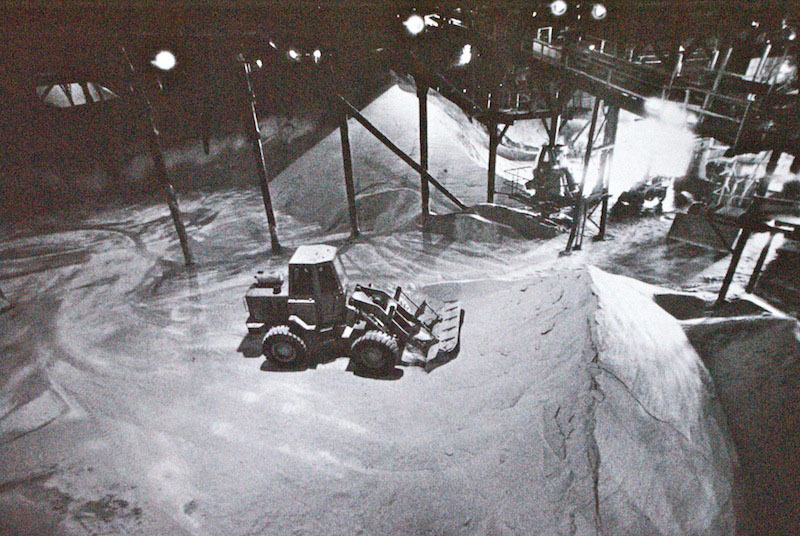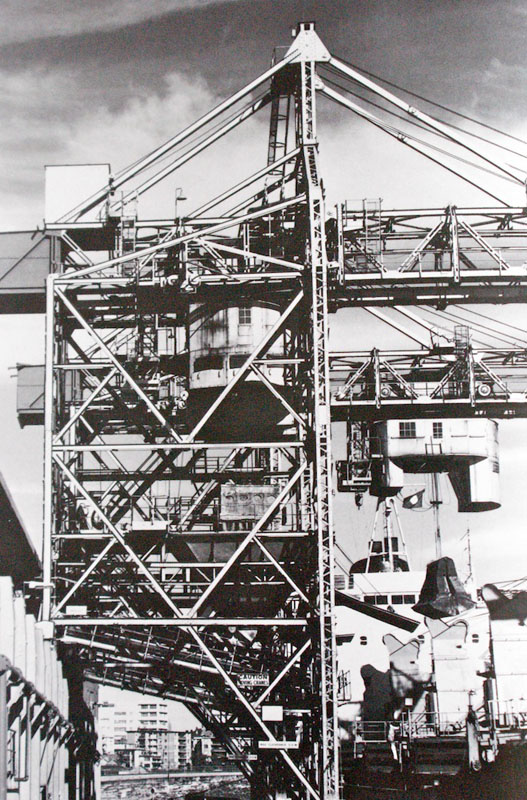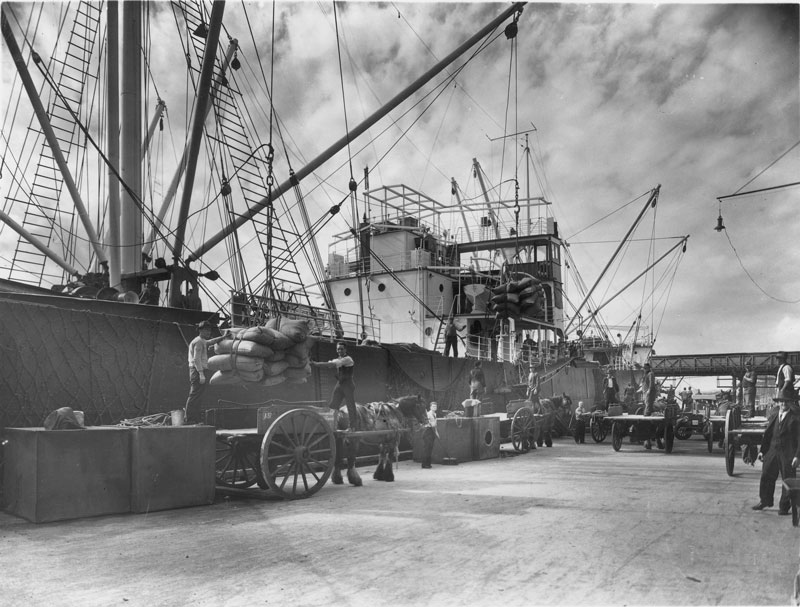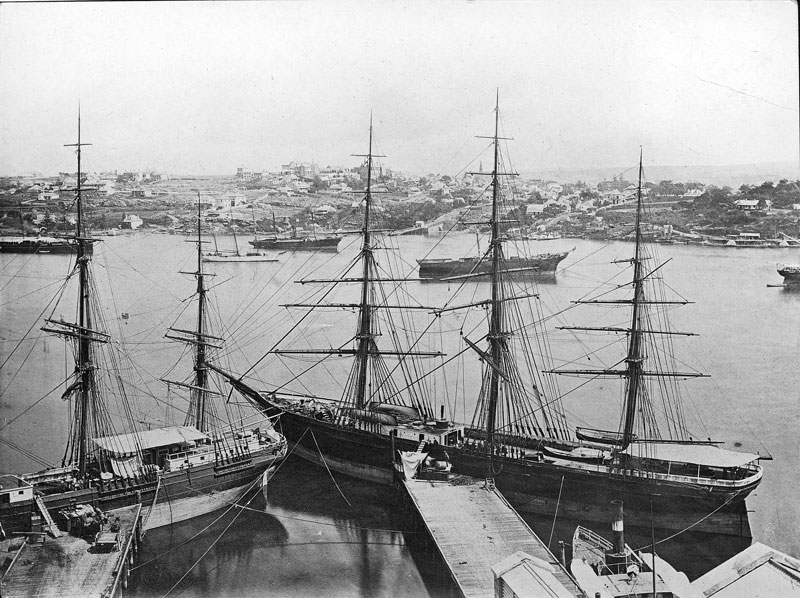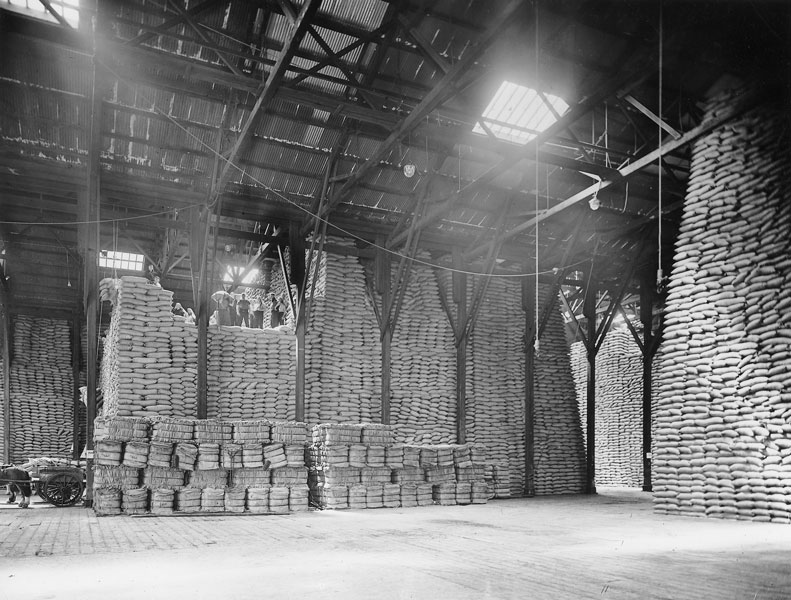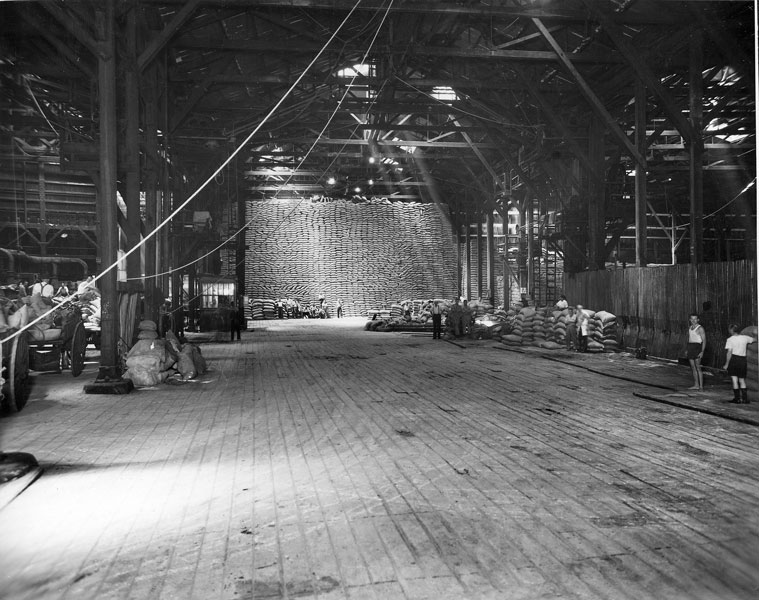Reflections
Date Built: 2002
Architect: Moore Ruble Yudell
Two 10 storey towers, Clear Water 47 apartments and Bridgeview 29 apartments. Overlooks Waterfront Park, Glebe Island, Johnstons Bay. Site of CSR raw sugar store.
Reflections
1880 - 1950
When the Colonial Sugar Refining Company moved to Pyrmont, the Reflections site was critical. Raw (crystalline) sugar arriving by ship from Queensland or Fiji was stored near the refinery (where Regatta Wharf and Fleetview now stand). The disused ballast quarry was ready-made for storing sugar: its rock walls only needed roofing. So ships moored opposite Reflections where sugar was unloaded and weighed: men wrestled sacks onto drays, and horses hauled the drays to the Raw Sugar Store where sugar was piled into hillocks.
Over time this process was streamlined. By the 1950s sugar could be loaded loose, and unloaded by a device like a water cannon. 140lb raw sugar sacks were slit at the ‘cutting in’ station and the contents tipped into a shaker conveyor – upended with a sack hook (a rookie often fell in as well). Machines replaced much of the manual labour, but horse power continued until the 1950s.
As CSR enjoyed a monopoly in Australian sugar production, it was essential to hold large stocks of raw sugar (so that the refinery could operate without interruption) and processed sugar (so that grocers and confectioners never lacked supplies). To meet this demand, the vacant quarry grew into a series of fully enclosed, high-roofed sheds stretching from the wharf as far inland as the Tablet House and Cooperage.



